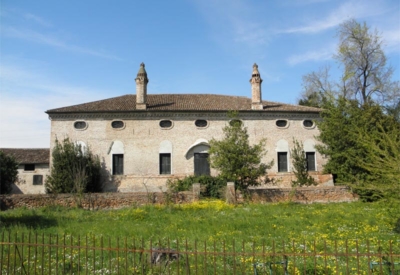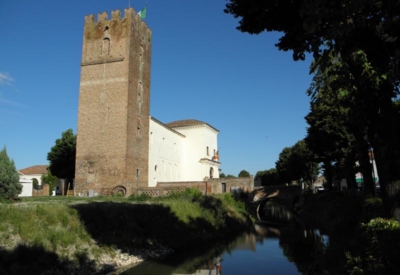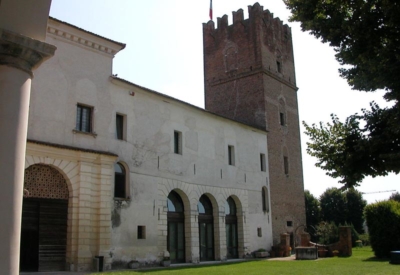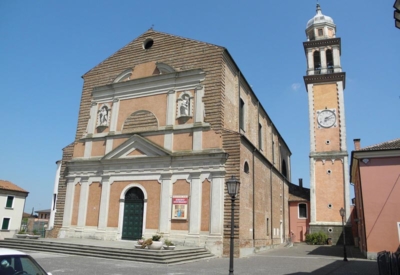ARQUÀ POLESINE
Arquà Polesine is a town of Roman origin full of history. The name comes from “arcuata” – bend. In ancient times, Arquà was built on the bend of a Roman road that crossed the Polesine and corresponded with the bank of the Pestrina, an ancient branch of the Po River. Roads were mostly built on embankments for safety reasons in these areas, as the countryside often flooded. The town is first mentioned in documents relating to the donation of this and other territories to the Church of Adria by the feudal lord Marquis Almerico in 938. Even then, the centre was important because of its commanding position on the Pestrina.
In 1146, Guglielmo III dei Marchesella, Lord of Ferrara, had a castle built there to defend himself from the Este family, who already had ambitions for the Ferrarese and Polesine regions. Arquà then came under the rule of the Este family, who fought with the Venetians for several centuries for control of this important military centre located in a strategic position between Ferrara and Venice.
In 1482, the Venetians finally took control of the castle and the territory of Arquà. The period under Venetian rule was peaceful and land reclamation works made the area more fertile and accessible. The castle was bought by the noble Diedo family from Venice, who restored and decorated it with frescoes. After the fall of Venice in 1797 following Napoleon’s invasion, Arquà’s convents were stripped of their property and religious congregations. Even the hospital attached to the Oratory of St. Anthony, which housed pilgrims, the poor and the sick, passed into French hands. In 1801, the territory was flooded for a long time by the Adige and Po Rivers.
Austrian rule, which began in 1815, was also hard on the population of Arquata: for fifty years the government suppressed all hopes of freedom. 1815, 1816 and 1817 were also terrible years for natural disasters: famine, cold and drought made the population’s conditions even more miserable and another flood hit the town in 1823. When Arquà was handed over to the Italian government in 1866, it became a municipality and its registers (the old parish registers) passed to the Town Hall.
The town had a long and difficult road to rebirth under the banner of the new independence: natural disasters, illiteracy, feudal land ownership, and the long years of the world wars, had reduced the population to a miserable state. It was only with the peace that followed WWII that the town gradually began to develop.
Worth Visiting
The Parish Church of Sant’Andrea Apostolo built around 1054, belonging to the Bishop of Adria. It was rebuilt around 1516 and restored in 1695.
The castle built in 1146 by Guglielmo III degli Adelardi Marcheselli, Lord of Ferrara, to defend himself from the Este family, who had set their sights on the territory of Ferrara and Polesine. After the castle was conquered by Este troops, it was recaptured by the Venetians following the bloody Salt War. All that remains of the castle is a crenelated tower divided into three floors and a central part overlooking a large courtyard, whose rooms are decorated with frescoes depicting mythological scenes. It still has a moat all around it and is accessed by crossing a bridge. The castle is the most important and best-preserved medieval building in Polesine.
The Este hunting lodge: now, the structure is an example of Ferrarese rural architecture dating back to the 15th century and is located on the provincial road that crosses the town in an east-west direction, whereas at the time it was set apart from the town, close to an ancient Roman road. Originally built for Alberto V d’Este, Marquis of Ferrara and Modena, upon his death in 1393, it was bequeathed to his son Nicolò III who was so laden with debts that in 1412 he gave it to the nobleman Andrea Durazzo, with the obligation of vassalage.




